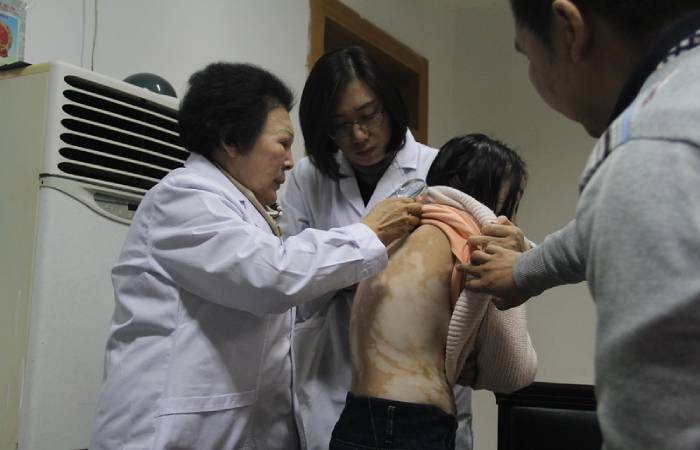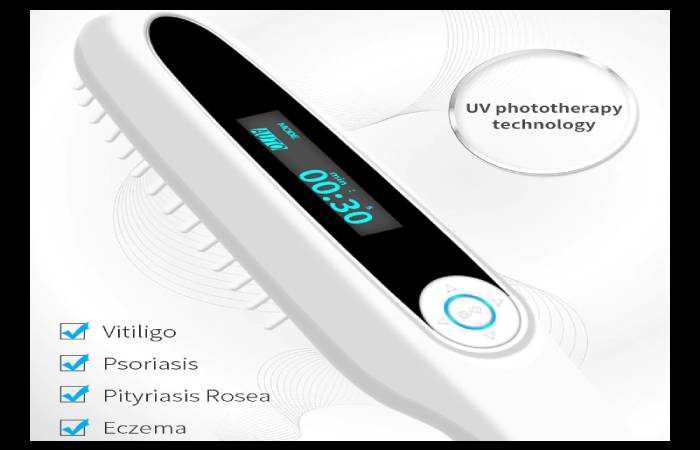Beyond the medical implications in the strict sense, vitiligo in children requires special attention due to the psychosocial consequences that it brings.
The little one needs reliable support and guidance to cope with the effects of the disease.
In most cases, vitiligo in children is due to a family history of autoimmune diseases.
It is a condition that can be perceived with the naked eye since it characterized by the appearance of well-defined depigmented areas on the skin.
This happens because the melanocytes, which are the cells responsible for pigmentation, do not work correctly and are lost.
The lesions appear in appearance as white patches, which can be of any shape and size, with various locations on the skin or mucosa.
How to deal with this disease in children? What treatments are available? Minors require special care and support for this condition. Therefore, here are some tips.
Table of Contents
About Vitiligo In Children

Vitiligo is not a contagious disease, but it does have a significant impact on appearance.
Based on this, it affirmed that, in the case of children, it has a more significant impact from the psychosocial point of view.
Initially, the disease manifests itself segmentally. Thus, the first spots appear in inconspicuous areas of the body, so they are not given much importance.
This is a mistake since your prompt attention improves the prognosis.
Segmental type vitiligo is more frequent during childhood compared to that of adults.
Statistics indicate that about 2.16% of the world population suffers from this condition, and a third of that number are children.
How To Treat Vitiligo In Children?
To decide what type of treatment given to vitiligo in children, the pediatrician or GP makes a referral to the dermatology specialist.
This will determine the typology of this disease and, from there, guides towards therapeutic options are.
Segmental vitiligo has a definite natural course, but non-segmental vitiligo is unpredictable.
In the latter, it is necessary to carry out tests to detect other autoimmune diseases. This allows the child’s profile traced to determine how to address the problem.
Topical therapies generally recommended when 20% of the body surface is compromised. They may contain topical steroids, topical calcineurin inhibitors, and vitamin D.
Likewise, body creams with a mineral complex frequently prescribed.
Although they are products used in people of all ages, it is useful. In turn, its use with phototherapy complemented.
Phototherapy And Sun Protection

Various studies show that phototherapy is effective in treating vitiligo in children.
Most commonly, a treatment known as PUVA used. In this, there are fewer side effects, which is very positive, since the little ones are more sensitive to these compared to adults.
PUVA therapy involves administering psoralen to the mouth or skin.
This is a drug that is activated when the patient exposed to light.
Then ultraviolet radiation applied. After application, it produces repigmentation and stabilization. However, it increases the risk of cancer.
Moreover, it is essential to ensure the sunscreen, especially in areas affected by depigmentation.
Although it is an excellent recommendation in all vitiligo patients, in children, it highly emphasizes since they tend to spend more time outdoors.
Other Treatment Options
In some cases, supplementation with low-dose vitamin D3 indicated to treat vitiligo in children. While some recommend supplementing with herbal intakes, such as ginkgo Biloba, it is not capable.
In general, it is advisable for a diet containing foods with vitamins A, C, and D. Foods high in acid, folic, selenium, zinc, and omega 3 fatty acids are also suitable.
Vitiligo m treated and managed in a multidisciplinary way. The specialties involved in the consultation are as follows:
- Endocrinology.
- Rheumatology.
- Nutrition.
- Psychology.
- Psychiatry.
- Hematology.
- Developmental disorders.
- Gastroenterology.
- Pediatrics.
Addressing Emotions Is Important
In children, the psychological impact of this disease is even more substantial than for anyone else.
Understandably, minors feel depression, sadness, or social rejection. It is a disease that becomes less bearable as it manifests itself in the most visible parts of the body.
The little ones, who are in the process of growth, have a harder time understanding the reason for their illness.
Even as they grow older, they experience more distress and anxiety from the disease.
Therefore, once they start their schooling, it is advisable to begin psychological therapy so that they can face their reality.
Such assistance should continue until puberty and adolescence, due to continuous emotional changes.
What To Remember About Vitiligo In Children And Its Management?
As soon as the clinical manifestations of vitiligo in children become noticeable, it is essential to seek medical attention.
This disease requires a multidisciplinary approach since its management goes beyond dermatology.
It is essential to provide psychological assistance to minors since they find it difficult to understand their illness and may experience social rejection and depression.
